This post may contain affiliate links. If you click through a link and make a purchase, I may receive a commission at no additional cost to you. As an Amazon Associate, I earn from qualifying purchases. Read the full disclosure here.
Do you have bad posture?
Have you tried everything to “fix” your posture, but nothing seems to work?
Unfortunately, there’s no quick magical solution. But, if you focus on three important things, you can improve your posture by building healthy habits that stick.
Plus, learn some of the most effective physical therapy exercises for posture (with pictures).
- What is posture?
- Natural curves of the spine
- Good posture vs. bad posture
- What causes bad posture?
- Effects of bad posture
- What is alignment?
- What does good posture look like?
- Physical therapy exercises for posture
- Can physical therapy fix my posture?
- Do posture correctors work?
- Wearable technology to improve posture
- How to keep good posture
Disclaimer: This content is for educational purposes and is not medical advice. Read the full disclaimer.
What is posture?
Better posture is much more than your ability to walk and balance a book on your head.
According to Physiopedia, posture is defined as the body’s attitude either with support during muscular activity or the coordinated action performed by a group of muscles working to maintain stability.
That sounds a little technical, so let’s break it down. There are two types of posture, static and dynamic.
Static posture is how someone holds their body when standing, sitting, or remaining relatively still.
Dynamic posture is how you hold your body and adapt to movements. These can be every day movements or fitness movements. Both types of posture are essential to avoid aches, pains, and injuries.
Posture is also strongly tied to emotions, which shouldn’t be surprising.
Natural curves of the spine
At the core of good posture is the position of the spine, which has several natural curvatures that help to align, balance load and forces, and absorb shock as we move.
Some people naturally have more or less spinal curvature in these areas. Poor posture habits, changes with age, or specific medical diagnoses can alter these curves in the long term.
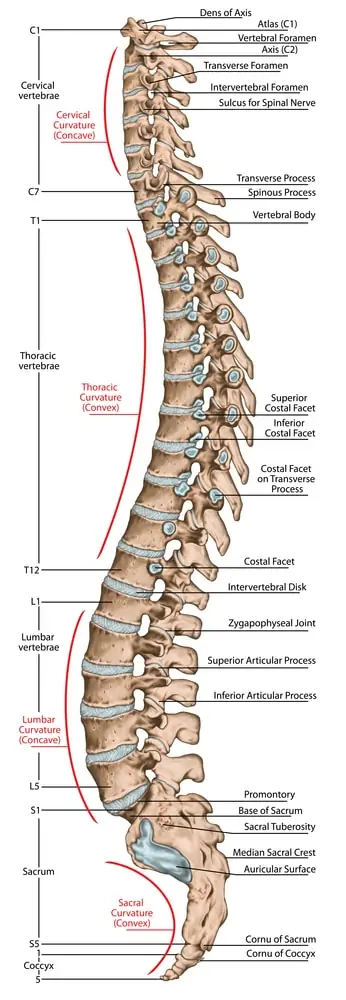
- The neck (cervical spine) has a natural lordotic (concave) curve.
- The mid-back (thoracic spine) has a natural convex curvature.
- The lower back (lumbar spine) also has a lordotic (concave) curve.
- The sacrum doesn’t move much as it’s locked into the pelvis.
What is neutral spine
You may have heard the phrase neutral spine in yoga or Pilates.
Neutral spine is when all the curves are present and balanced. This neutral alignment is a very stable position for the spine.
For example, in a tabletop position, the spine is relatively neutral. In cat, your spine is flexed. In cow, your spine is extended.
If you’re doing a pelvic tilt, common in Pilates, you are flattening the lumbar spine curve, and this is not considered neutral spine.
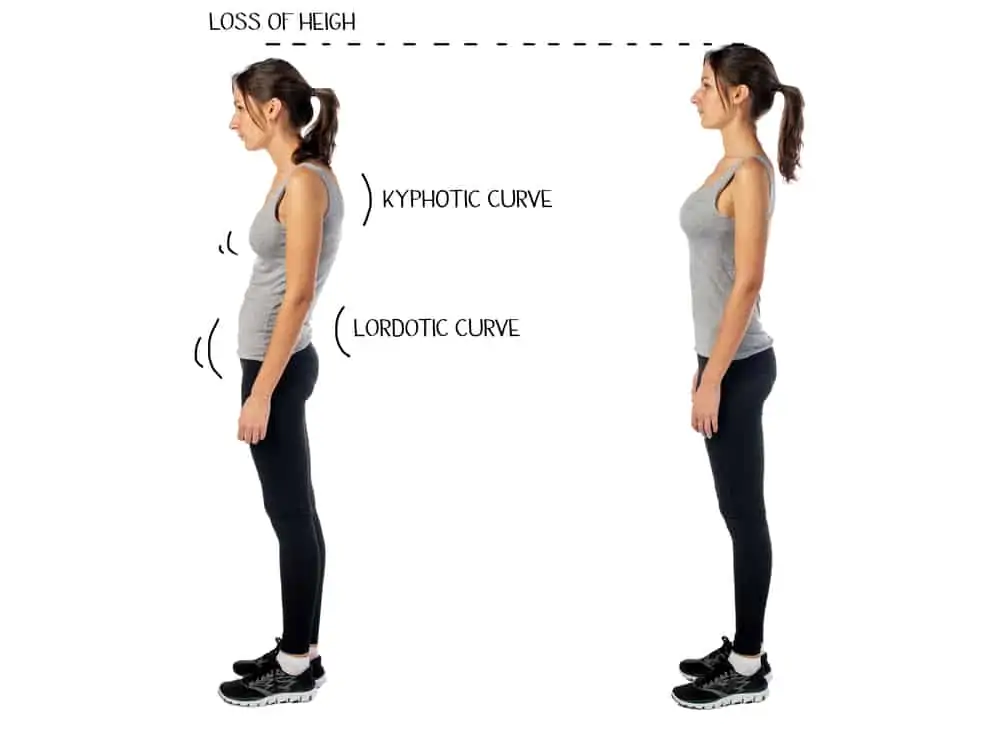
Good posture vs. bad posture
It’s common to think that there’s only one proper posture, and if you don’t have “it,” then it’s just the way you are, and you’re doomed to have pain posture-related problems forever.
The truth is, posture is a dynamic concept, and there isn’t just one perfect body position. Even if you remained in a proper posture for several hours, you’d still have aches and pains.
Some positions are not necessarily wrong, but when you stay in improper posture for hours on end and don’t make any motions to counteract, that’s when pain occurs.
Maintaining a healthy range of motion and adequate strength will help your body support you as you live and move in 3-D.
Improving your posture does require some attention and lifestyle modification.
Keep reading to learn how.
What causes bad posture?
Often, there are several contributors to poor posture.
You can’t change your skeletal structure. But, you can modify many of these factors and take charge of your health.
- Poor postural awareness
- Inactivity
- Poor movement patterns
- Muscle weakness, especially core muscles
- Spending too much time in any one position, such as prolonged sitting
- Not performing specific stretching and strengthening exercises
- Variations in anatomy
- Degenerative changes
- Medical conditions that affect the skeletal system (e.g., scoliosis)
- Being overweight
- Poor workstation ergonomics
- Emotional state
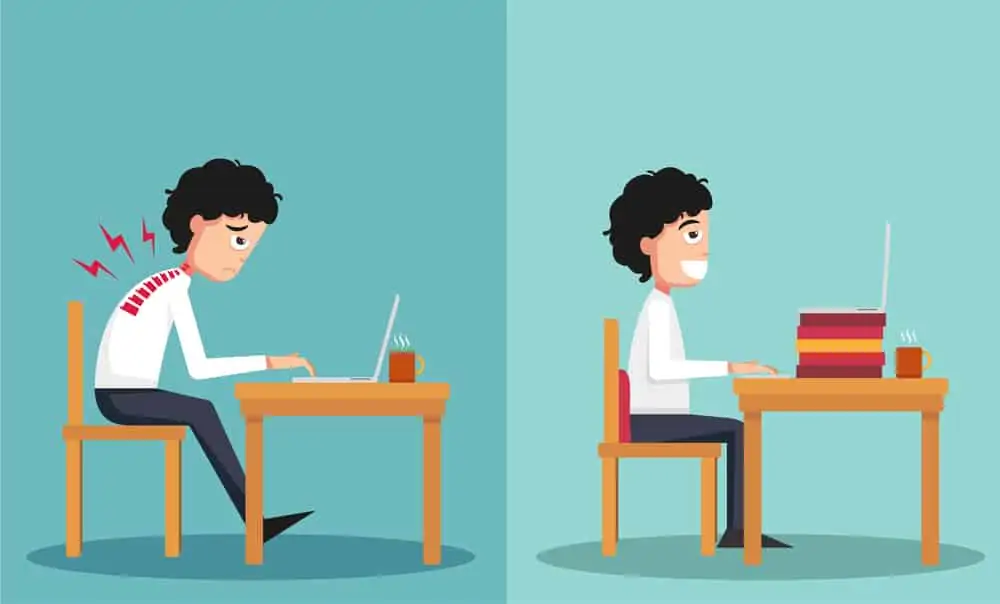
Effects of bad posture
The long-term effects of bad posture span further than a stiff neck.
Here are some ways in which poor posture can affect multiple systems of the body.
- Musculoskeletal pain including muscle strain in the neck, back, and shoulders
- Tension headaches
- TMJ issues
- Nerve pain (e.g. compression of spinal nerves)
- Muscular imbalance
- Reduced lung capacity
- Increased feelings of negative emotions (depression/anxiety)
- May increase reflux or affect digestion by compressing internal organs
What is alignment?
The term alignment is thrown around a lot, from medical professionals to the fitness industry. Alignment is not the same as posture.
Posture is just how we hold ourselves.
Alignment is how different joints/tissues line up in relation to each other and the ability to balance and distribute load and forces around a joint(s). Alignment can also vary based on your anatomy.
Alignment plays a role in posture and proper form, whether we’re talking about fitness movements or yoga poses. When you’re in good alignment, muscles can function more optimally, and there can be less wear and tear on joints.
Sometimes people are told they’re “out of alignment,” and they’re actually not. That is their normal alignment.
Hearing the phrase “out of alignment” makes people feel like the body is fragile and at any moment can be knocked out of alignment. This fear can lead to movement avoidance.
In reality, our bodies should be able to handle moving in and out of various postures and positions all day long without significant consequences.
Someone may not look perfect, but it doesn’t mean they’re about to hurt themselves. Sometimes proper alignment is uncomfortable for whatever reason.
Good alignment doesn’t guarantee someone won’t get injured, and poor alignment doesn’t automatically mean an injury is imminent.
The slightest adjustment can mean all the difference in preventing an injury, or it can mean nothing. It depends.
What does good posture look like?
It doesn’t have to be complicated.
Generally, good posture includes:
- Keeping the head stacked over the neck
- Keeping the shoulder blades slightly pulled back
- Not slouching and compressing the mid and lower back (thoracic and lumbar spine
- In sitting, keeping the feet flat on the floor and consider using a lumbar support to maintain natural curves of the spine and maintain an upright posture.
- In standing, an awareness of the abdominal muscles (not letting the belly sag and increase the curve of the low back), knees soft and not hyperextended.
- Good support for the arches of the feet
Physical therapy exercises for posture
To truly improve posture, it needs to come from within.
Posture is also an ongoing concept. It’s not something you can say, “ok, now I’m good, I have good posture,” and just ignore it.
You also can’t buy a gimmicky brace, set it, forget it, and expect to see results. It just doesn’t work that way. (I’ll explain why not later in the article.)
To improve your posture, you need to focus on three things:
- Flexibility and mobility
- Strengthening exercises for postural muscles
- Postural awareness
Stretching and mobility exercises to improve posture
Your body can’t move into motions it doesn’t have.
Inactivity and lack of exercise have some detrimental effects over time. If you don’t use it, you lose it slowly and steadily until movement becomes uncomfortable.
Computer work is one way that technology traps us into a sedentary lifestyle. Whether it’s using your laptop on the couch or hours scrolling through your phone, spending hours in a slouched position can make you feel tight and achy.
The less you move, the tighter you feel. It’s a vicious cycle.
Part one of improving your posture is to make sure you’re regularly moving your body through its available range of motion. The movements become more comfortable and natural with practice.
Here are three exercises for posture that your body will crave after hours at the computer.
*Please note, these exercises are just examples and may or may not be right for you. There are many ways to target the same areas.*
Thoracic spine extension
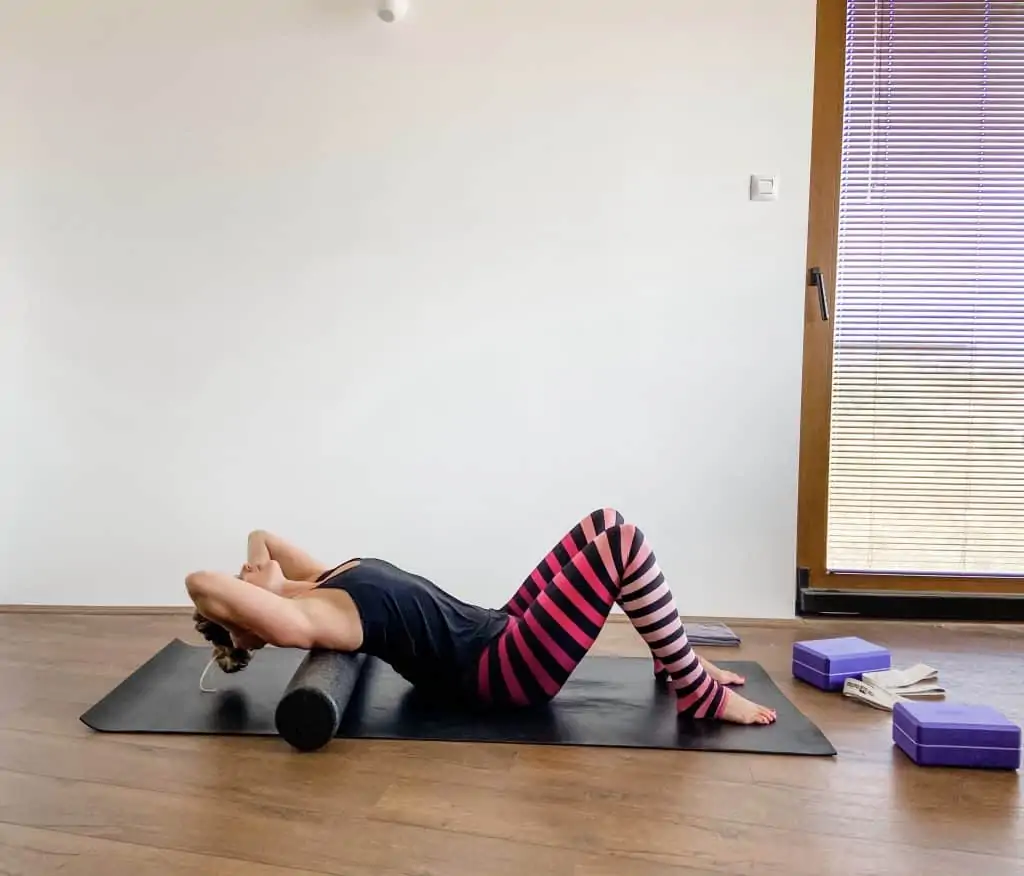
You don’t need a lot of equipment to work on posture exercises. A foam roller is an inexpensive investment that will help you work on mobility and muscle tension.
- Sit on the floor and place the foam roller perpendicular to your spine at the shoulder blade level.
- Cradle your head and neck with your hands. You’ll want to keep your neck neutral while performing this stretch.
- Gently roll back, extending over the foam roller only as far as you feel comfortable.
- Slowly lift back up and repeat ten times.
- Keep your bottom on the floor the whole time, and keep your gaze on the top of your knees to protect your neck alignment.
Lumbar spine extension
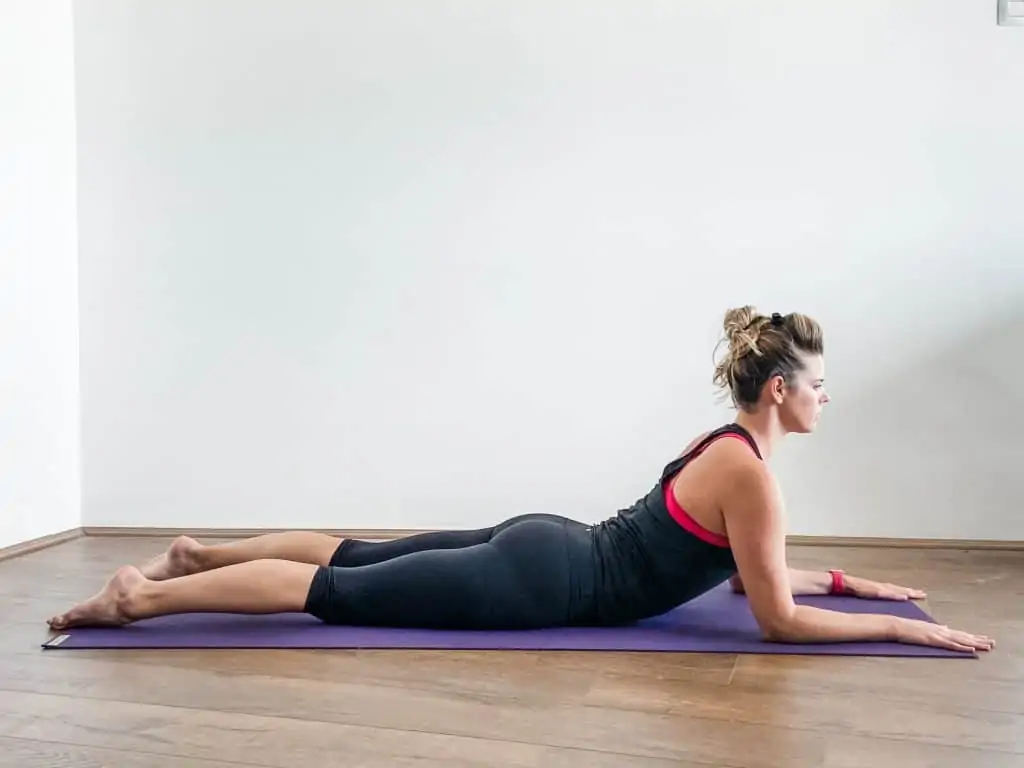
- Lie on your stomach and bring yourself to prop on your forearms.
- Bring the elbows underneath the shoulders for the most extension into this position.
- Stay for 30 seconds to 1 minute, continuing to breathe deeply.
- Repeat 2-3 times.
Pec stretch on a foam roller
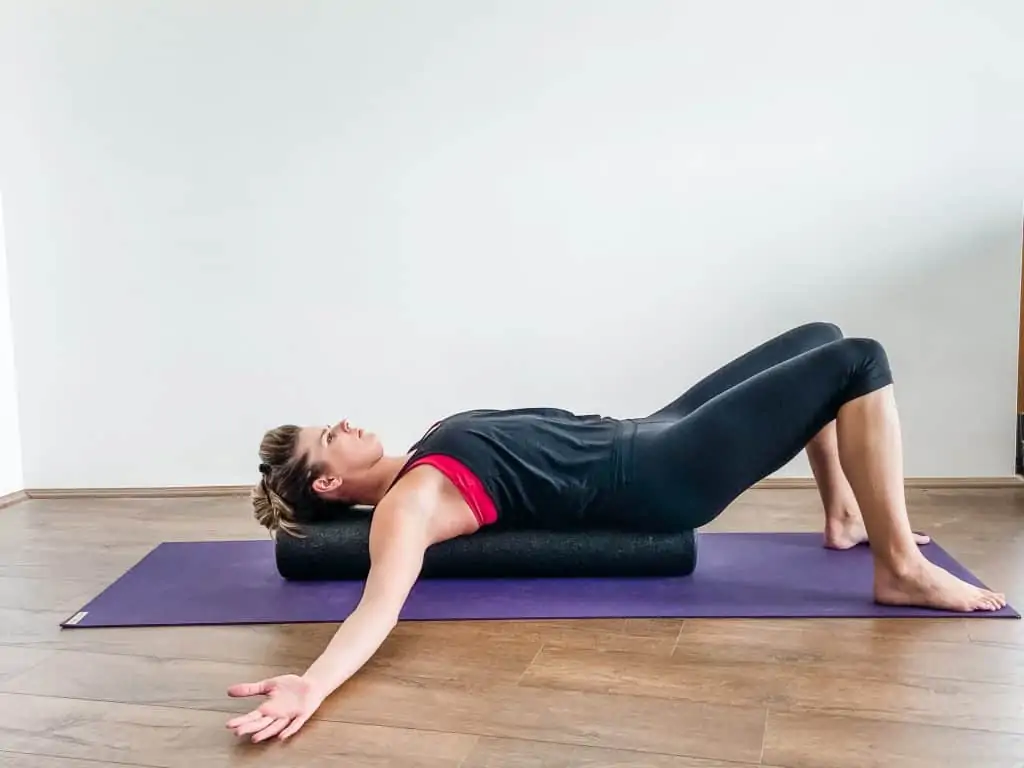
- Lie on the foam roller so that it’s along your spine, with both your head and sacrum supported.
- Slowly extend your arms out to a T position and stay for 30 seconds.
- Variations include putting the arm at a goal post position or a Y. Some positions may be more intense than others.
- This option may be too intense for some because the foam roller lifts you and gives extra space. If there is pain or tingling, you can always try without the roller and work up to it as your flexibility and mobility improve.
Most exercises for posture tend to focus on the upper body. However, posture is a total body concept. Strengthening exercises for the glutes should also be on your radar.
Related: The 7 Best Foam Roller Exercises To Combat Poor Desk Posture
Strengthening exercises to improve posture
Strength training is one of the best ways to decrease your risk for musculoskeletal injuries. Strengthening can also help build that mind-body connection and improve postural awareness.
Often with postural-related pain, muscles in the front of the neck and upper back become weak. Studies have demonstrated that strengthening these areas can positively affect pain and improve overall posture.
Posture and proper for are essential for strength training to transfer forces optimally throughout the body.
It also helps to learn the names of muscles that go with each exercise so you can “put your mind to the muscle.”
How to increase postural awareness
One of the most frustrating things for patients seeking physical therapy to improve posture-related pain is “how do I know if I’m doing it right?!”
At first, all new movements may feel awkward and foreign. Your ability to self-correct your posture is a significant factor in your success.
Cramer et al. concluded that improvements in self-reported postural awareness were associated with decreased pain in patients with spine/shoulder pain.
In other words, people got better at posture the more they practiced and reported less pain.
Mindfulness is a powerful thing, but also a trendy term that’s thrown around a lot these days. Without the proper context, the term is rather useless.
Mindfulness, in this case, is performing movements with focus and intention and processing the sensations that go with them.
It takes time to learn how to listen to your body. When performing stretching and strengthening exercises, don’t just go through the motions. Observe the sensations that you’re feeling with each movement.
Increasing your body awareness can improve your proprioception (your ability to sense where your body is in space) and kinesthesia (movement awareness).
Taking frequent breaks from sitting still is also recommended. If you listen to your body, it will tell you when you need to take a break.
What am I supposed to be feeling?
Knowing what you’re looking for can be helpful in improving awareness.
The cues are subtle, such as changes in tension, pressure, pulling sensations, or pain relief. The more you practice, the easier it will become to recognize these sensations.
Movements will then start to “feel right.”
How soon until it feels right?
Practice may take a few repetitions of a movement, a few days, or a few weeks. Everyone is different so stick with it.
When those aches and pains start to creep up during the day, that should be a big flashing neon sign that you need to do some posture exercises.
Here are some ways that you can improve your postural awareness.
- Move your body often
- Practice self-correction in front of a mirror
- Sit for a few minutes and observe your body without distractions.
- Self correct your posture frequently – even if you don’t have pain.
- Postural muscle strengthening exercises
- Try the Upright Go 2 Posture Trainer
- Set up your workstation properly
- Change positions when you start to notice aches and pains.
- Try yoga or Pilates (these activities have a heavy emphasis on sensation and intention with movement.)
Read How To Be Less Injury Prone With Body Awareness Exercises for an in-depth look at this concept and techniques you can explore to improve.
Can physical therapy fix my posture?
Unfortunately, someone else can’t “fix” your posture.
Physical therapy and chiropractic care can help you improve your posture by assessing you as an individual, identifying areas to focus on, providing manual therapy techniques, specific exercises, and education.
Just simply attending visits will not improve your posture.
If you leave the office and don’t continue with home exercises and self posture awareness, you will not see lasting improvement.
The same is true to massages. Don’t get me wrong, massages are a great adjunct to your overall health and wellness, but passive treatments alone cannot change your posture.
Related: How To Prepare For Your First Physical Therapy Visit
Do posture correctors work?
As I said before, you can’t buy some kind of magical posture corrector or brace, put it on, and expect the problems to disappear.
When it comes to the body, there are no quick fixes. To make lasting improvements, you need to build healthy posture habits.
Palsson et al. reviewed studies on posture correcting shirts in their effectiveness in reducing pain and improving posture and found no significant evidence to support the use of these devices. In general, studies were low quality and biased to favor the target product.
Ouch. Sorry infomercials.
Here are some flaws with posture braces:
Temporary benefits
There may be some short-term benefits. However, posture braces can serve as a crutch when used too much, weakening muscles over time because there’s no incentive for your muscles to work.
You may even become reliant on the brace over time.
Posture correctors can make problems worse
Posture is also more of a whole-body involvement. If you correct just one area, it may make other areas worse due to dramatic changes in alignment. You’re missing critical pieces of postural awareness.
They also may not be adjusted correctly, or you’re possibly over-correcting.
It’s better to work with a physical therapist who can properly assess you and give direction specific to your needs.
Braces are not a cure for poor posture habits
A common thought is that wearing a brace “educates” your body on how to stay.
To truly improve posture and movement, you need to focus on stretching, strengthening, activity modification, and body awareness. Active participation is the best way to educate your body.
Wearable technology to improve posture
A common complaint from those looking to improve their posture is “I can’t tell when I’m slouching.” They usually then go on to say, “I just need someone to follow me around all day and remind me.”
Posture monitor sounds like a job someone might have had for medieval royalty.
But today, thanks to wearable technology, that might be possible. Check out the Upright Go 2 Posture Trainer and see how it works for you.
The Upright Go 2 is a small tech device that you stick to your upper back via an adhesive (they also have a necklace option). The device syncs with your smartphone and provides vibration feedback to correct your posture when it senses that you’re slouching.
Wearable health technology is continually improving. Evidence is limited at this time for how devices help in the long run or if benefits carry over while not wearing them.
Pros
- Low profile device provides haptic feedback via a tap or vibration to remind you when you’re slouching.
- May help improve self-monitoring and self-correction of posture and the ability to learn what optimal posture feels like.
- Track data over time to see improvements.
Cons
- Expensive (around $75-100)
- May not be ideal for the non-tech savvy.
- Still early, minimal research.
- Postural awareness and self-correction are only one piece of the puzzle.
How to keep good posture
Improving your posture is an ongoing process. No one thing will “fix” your posture.
The good news is, it’s never too late to start working on your posture. Incorporating flexibility, mobility, postural muscle strengthening, and mindfulness will help you build healthy habits and support your body in the long run.
Use these tools to improve your body awareness and escape the harmful effects of bad posture.
Let me know how it goes!
References:
Cramer H, Mehling WE, Saha FJ, Dobos G, Lauche R. Postural awareness and its relation to pain: validation of an innovative instrument measuring awareness of body posture in patients with chronic pain. BMC Musculoskelet Disord. 2018;19(1):109. Published 2018 Apr 6. doi:10.1186/s12891-018-2031-9
Fathollahnejad, K., Letafatkar, A. & Hadadnezhad, M. The effect of manual therapy and stabilizing exercises on forward head and rounded shoulder postures: a six-week intervention with a one-month follow-up study. BMC Musculoskelet Disord 20, 86 (2019). https://doi.org/10.1186/s12891-019-2438-y
Joshi S, Balthillaya G, Neelapala YVR. Thoracic Posture and Mobility in Mechanical Neck Pain Population: A Review of the Literature. Asian Spine J. 2019;13(5):849-860. Published 2019 Jun 3. doi:10.31616/asj.2018.0302
Kim D, Cho M, Park Y, Yang Y. Effect of an exercise program for posture correction on musculoskeletal pain. J Phys Ther Sci. 2015;27(6):1791-1794. doi:10.1589/jpts.27.1791
Lee DY, Nam CW, Sung YB, Kim K, Lee HY. Changes in rounded shoulder posture and forward head posture according to exercise methods. J Phys Ther Sci. 2017;29(10):1824-1827. doi:10.1589/jpts.29.1824
Palsson, Thorvaldur & Travers, Mervyn & Rafn, Trine & Ingemann-Molden, Stian & Caneiro, JP & Christensen, Steffan. (2019). The use of posture-correcting shirts for managing musculoskeletal pain is not supported by current evidence – A scoping review of the literature. Scandinavian Journal of Pain. 19. 10.1515/sjpain-2019-0005.
Parreira Pdo C, Costa Lda C, Hespanhol LC Jr, Lopes AD, Costa LO. Current evidence does not support the use of Kinesio Taping in clinical practice: a systematic review. J Physiother. 2014 Mar;60(1):31-9. doi: 10.1016/j.jphys.2013.12.008. Epub 2014 Apr 24. PMID: 24856938.
Shete MG, Shah R. Effect of posture correction exercises and ergonomic advices in people having postural abnormalities among chronic smartphone users. Int J Health Sci Res. 2019; 9(7):121-125.
Yoong NKM, Perring J, Mobbs RJ. Commercial Postural Devices: A Review. Sensors (Basel). 2019;19(23):5128. Published 2019 Nov 23. doi:10.3390/s19235128

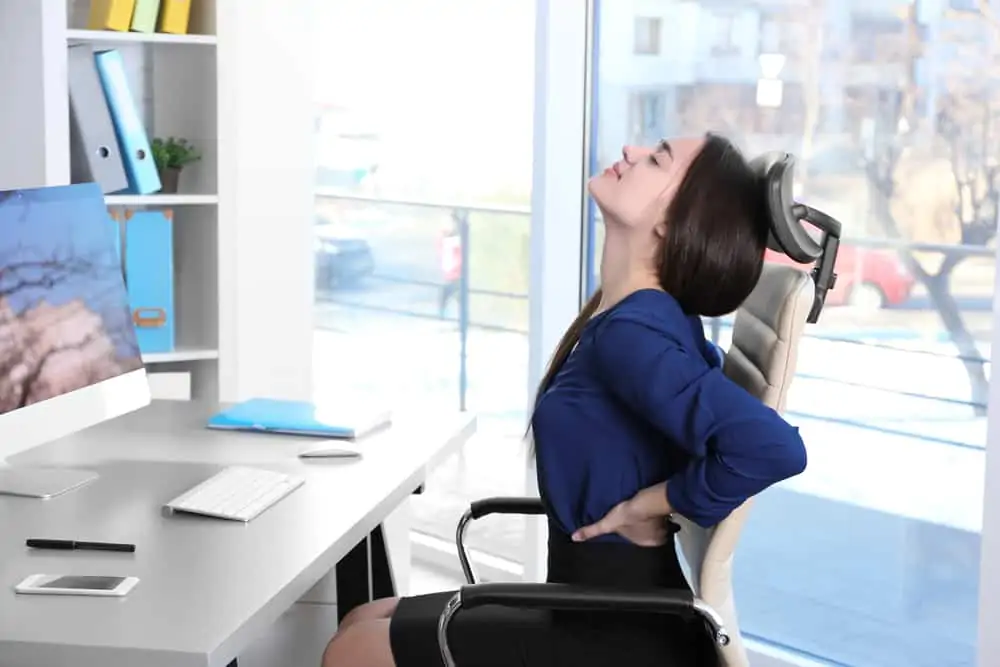
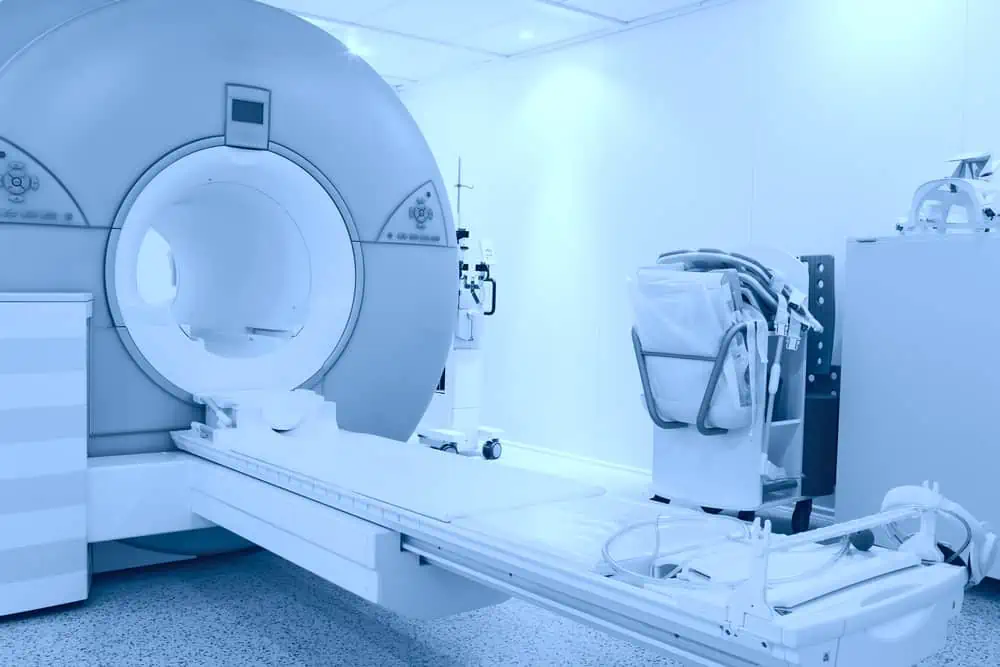

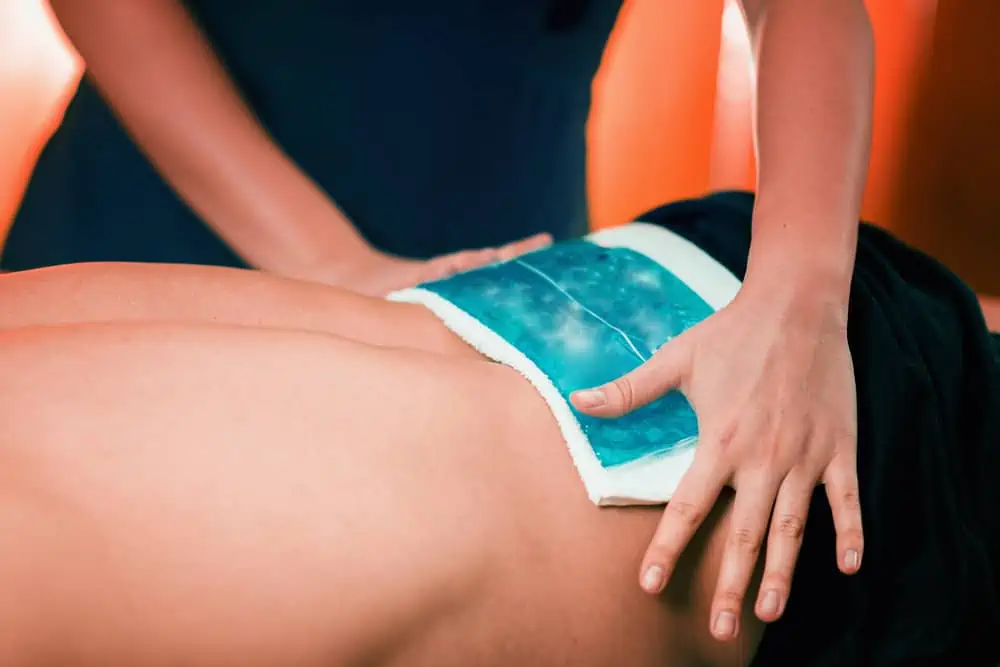
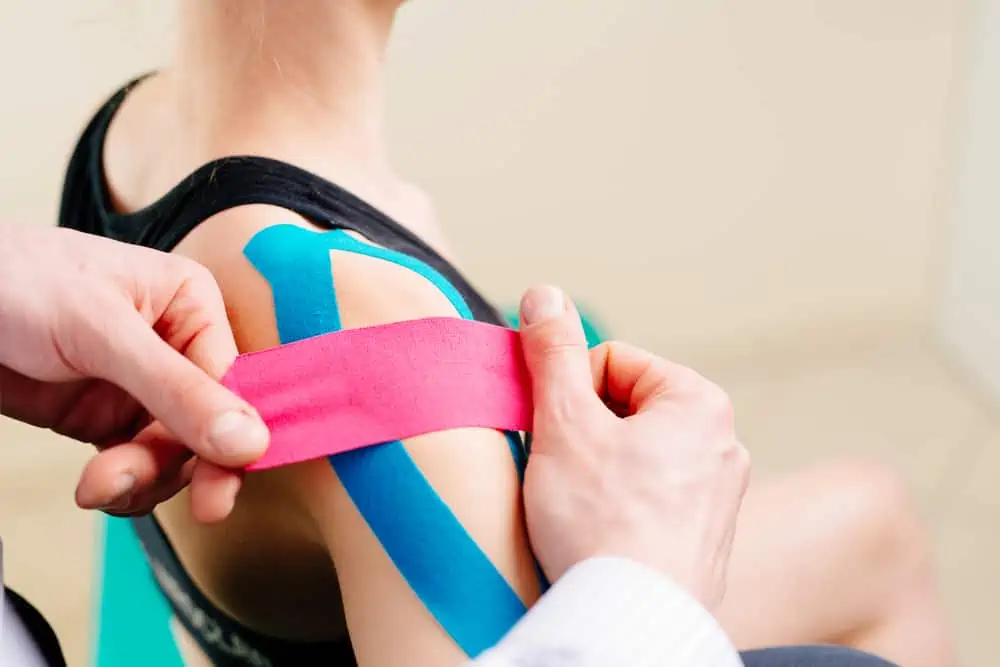


Since the pandemic, I have been spending a lot more time in front of the computer, which is definitely not good for posture. I’ve been resorting to swimming and my chiropractor when I start to feel pain. Thanks for the useful suggestions on how to correct posture. I will definitely try them out.
Hope it was helpful, thanks for reading!
I try to be aware of my posture tho most times I forgot especially when sitting down at work. Thanks for this informations.
Glad it was helpful, thanks for reading.
This is a great post!! In today’s world of office jobs and too much sitting I think this is such an improtant issue and am so glad you thoroughly addressed it.
Thanks for sharing:)
Thanks for reading!